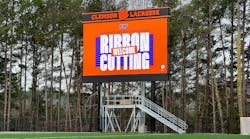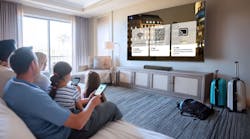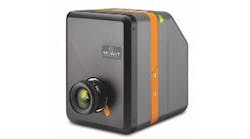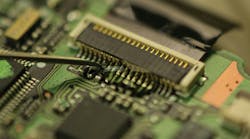In 1926 at the urging of the Kissimmee Beautification League, the city was persuaded to purchase 13 acres from the South Florida Railroad on the shore of Lake Tohopekaliga (known locally as "Lake Toho"), to create its first park. In the decades since, the nature of the park was one with a baseball field; an American Legion post; the Kissimmee All State Tourist Club; a popular annual "Boatacade" boat show and racing event begun in 1949, lasting about twenty years; and frequent bass-fishing tournaments. While the Legion post is still in the park and active, makeup of Lakefront Park has shifted from being primarily "active," to now primarily "passive." In 2006 the city contracted with one of the country's largest, most accomplished urban design, master planning and energy-saving consulting companies, AECOM. AECOM developed a master plan and, beginning in 2007, started realigning streets bordering the park, getting all necessary infrastructure and road networks completed prior to actual park re-construction, and its expansion to 25 acres. To accommodate costs to the city and workflows, the total project was conceived in three distinct parts. Part one was completed in 2011, part two in 2013. Part three is on track for completion by October, 2014. AECOM's strategy, according to Michael Brown, a landscape architect, architectural designer and product specifier for the park, and senior associate at AECOM Design & Planning, was to reconfigure the existing waterfront park and its roadway, Lakeview Drive, into more functional, beautified public open spaces. There are also now the additions of taxable, investment- and employment-creating adjacent land parcels, for environmentally-friendly economic development within the City of Kissimmee. New "Green Streets" now more effectively connect Lake Toho to downtown Kissimmee. An added nine acres of "redevelopment land" are on the new "light traffic" roadway of Lakeview Drive, proximate to a planned commuter-rail station to be located in downtown Kissimmee. In keeping with an important energy-saving component and with the overall orientation of AECOM, outdoor landscape and area lighting for the Kissimmee Lakefront Park project was highly energy-conserving and low maintenance, as well as being a creative approach to providing illumination for Ruby Plaza adjacent Ruby Avenue. In keeping with the much greater environmental and energy-saving nature of the City of Kissimmee's revised and expanded Lakefront Park, outdoor lighting selected now also works hand-in-glove with the rest of redesigned Park spaces. A prominent, environmentally-oriented national lighting-design firm -- Horton Lees Brogden -- was selected to evaluate and recommend types of outdoor lighting that would be compatible and integral with the new park; to be lastingly contemporary in design as the park itself now is; and to be highly energy conserving and low maintenance, with extraordinarily long operating life. According to nationally recognized, multi-award-winning professional lighting designer Barbara Horton, "The Kissimmee Lakefront Park itself is, from an architectural and landscape-design point of view, literally infused with natural and manmade design elements at practically every turn. The architectural columnar and ground-bollard lighting units selected actually form their own design elements, as employed throughout the Park. They are of uniform design, particularly energy efficient, energy saving and require negligible maintenance," Ms. Horton notes. The predominant lighting used in the Park, and with particular emphasis in the Ruby Plaza area, is known by the name City Elements and available exclusively throughout the U.S. from HessAmerica, part of the international Hess Licht + Form design and manufacturing organization, presently in its sixty-sixth year as of 2014. These modular, multifunctional light columns are available in variable heights for outdoor site, area and street illumination, with several column diameters available. Horton Lees Brogden chose nine-inch diameters uniformly throughout Lakefront Park. The system allowed AECOM and Horton Lees Brogden design professionals to satisfy multiple lighting objectives from a single light structure for economy; for lighting and design uniformity; and by eliminating visual clutter and wasteful glare. The luminaire products selected are particularly suited for public parks, pedestrian malls and cultural areas, in any climate. Mounting heights are uniform at 13-feet throughout the Park. Their scale and proportions enhance landscape and structural architecture at the site. Column configurations facilitate these purposeful lighting instruments. For example, an additional lighting element with RGBW color changing LEDs for visual accenting was included below the top lighting module. The accenting elements are controlled by DMX lighting controllers and were programmed with several scenes that will be changed throughout the year for special events and activities. The nine-inch-diameter City Elements columns provide integral combinations of up, down and lateral pathway lighting, landscape accenting and zonal definition. Lenses selected are impact-resistance acrylic. Column finishes are uniform in design and appearance. "They are finely textured in Hess's own original matte silver-grey metallic, often copied by others," Ms. Horton concludes.
Contact:
HessAmerica
+1-864-487-3535
E-mail:
[email protected]
Web site:
www.hessamerica.com
Submit new products, case studies/projects, and other press releases at http://www.ledsmagazine.com/content/leds/en/addcontent.html and http://www.ledsmagazine.com/content/leds/en/iif/add.html.






